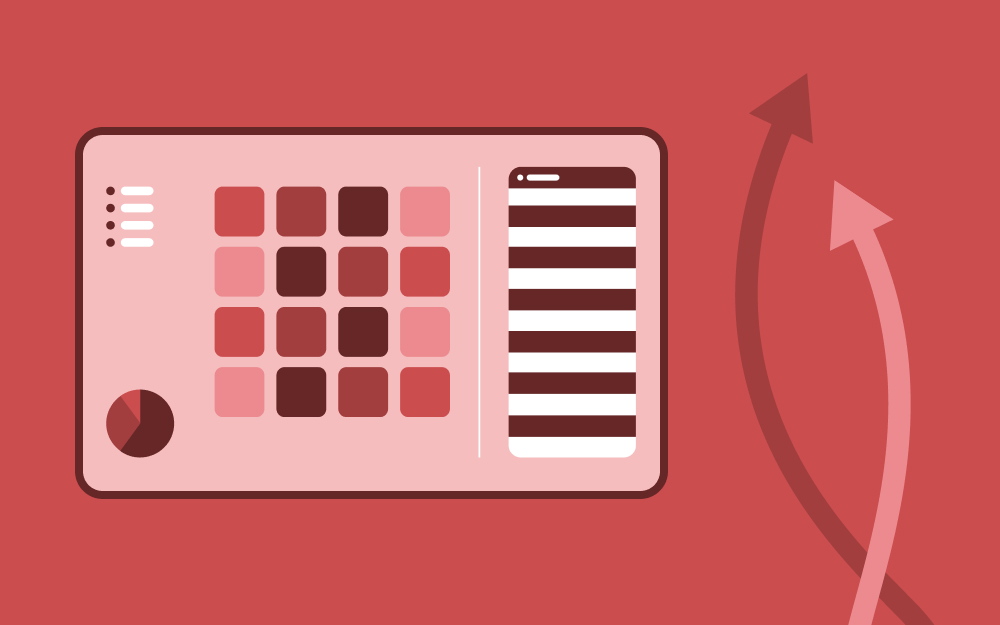In-Store Advertising That Sells: 11 ways to maximise performance


Whether you are enticing shoppers into your stores or promoting special offers, in-store retail advertising is critical to driving revenues. An NRF study in 2022 shows that 80% of sales still happen in physical locations. Meanwhile, a POPA in-store shopper engagement study found that 82% of purchasing decisions are made in a store and that 16% of unplanned purchases are driven by in-store advertising. Therefore, in-store retail advertising is important to get right, and here are 12 tips to ensure you produce marketing that sells.
Your marketing will be significantly more effective if you plan your campaign around your target customers. Regardless of whether you are making a TV ad, a social media campaign, or an in-store campaign, the first step to doing this is to diagnose the market. This enables you to tap into what consumers think and feel to create promotions that resonate with them at the moment of purchase. This will help shape your creative work, advertising placement, and campaign’s objectives.
While the above stats highlight averages, all industries and categories are different. For example, purchase decisions for cereals are typically made in-store, but purchase decisions for electronics are closer to 50-50 as consumers tend to conduct research before going into a store or buying online.
If you take the time to understand your target audience and how and where they tend to shop, the rest of your marketing efforts will fall into place. In addition to monitoring the market and current trends, it’s important to understand your target audience, which types of stores they shop in, and which geographies they shop in.
This is particularly important if you’re running brand activations in stores. In this case, you need to evaluate which retailers, store types and locations to place greater promotions.
However, even for retailers, understanding the difference in consumer profiles in the areas around your stores should shape the promotions you run. While one may be located in a highly price-sensitive area, another may not. And your marketing and messaging need to reflect and appeal to different customers.
For more information about identifying your target audience, we’ve broken down the different types of customers and how they shop in this article.

Placing your adverts in the right place in stores is equally as important (if not more important) than what you say in your marketing. If you can identify where consumers make purchase decisions about your product, your in-store advertising will be twice as effective. For example, end-caps can be a fantastic way to highlight promotions or brands. However, if you promote confectionary at the end of the vegetable section, it will struggle to make an impact. However, your campaign is likely to be incredibly effective if you promote complementary items such as beers next to the BBQ section during the summer. And it would stand out much more than promoting your alcohol brand within the alcohol section.
Getting these placements right in hundreds or thousands of stores, all with different layouts, can be incredibly challenging. At Colateral, we make it easy to manage store-specific allocations and ensure the right materials go to the right store at the right time. You can find out more about that on our page about store profile management.
From cheese tastings to a raffle for a luxury car, shoppers love promotions that create an engaging experience. This is one of the most effective ways to make your brand stand out in the store because it disrupts the typical shopping experience and makes you stand out.
The staples of in-store advertising include aisle fins, Point-of-sale signage and window displays but creating an experience offers many additional benefits too. It can also support brand awareness, and brand salience as the experience will stay in your customers’ minds for longer. At a time when in-category brand loyalty is high for repeat purchases, an opportunity to capture repeat customers in-category is a worthwhile pursuit.
These can range from extravagant one-off events to more repeatable experiences in multiple locations.
When studying 3200 marketing campaigns, Marketing Week found that campaigns utilising 2 or more channels were more effective than just 1 channel. And there’s a correlation between the number of channels used and the effectiveness of up to at least 5.

As your in-store promotions don’t have much time to say something, aligning them with your creative in other channels can trigger a response to your TV ad or an ad they saw online. So it can effectively use limited space to make a bigger impact. Of course, it relies on using broad media to be the most effective. Otherwise, the message will likely be lost on your customers.
Tools like Wave 2 can easily convert a single creative asset to fit different channels and media shapes and sizes.
Producing high-quality creative work can be the single biggest impact on the effectiveness of your marketing campaigns. Unfortunately, you rarely have that creative expertise in-house with the ability to focus on producing high-quality creative work.
Using the advice from point number 5, you will likely work with a creative agency for your campaign across other channels. But it’s important to use them to create assets for in-store as well. Additionally, you will need to work with a printer or agency to produce the materials. They will be critical in providing expertise to get the most from your chosen media.
While big experiences and extravagant displays often make headlines, they can be expensive. Despite those tactics, window posters, aisle fins, and shelf trackers remain important in in-store advertising. Effective signage that stands out when consumers make a purchase decision can be as effective as an extravagant activation campaign.
However, it’s still important to deliver an effective message at this point that compels the customer to buy your product.

The two most important parts of an effective in-store campaign are the messaging and the placement. You need to tap into your customer research to create compelling messaging. This needs to tap into why they buy the specific product and what they value in the category to ensure you are appealing to your audience in the right way.
Additionally, you cannot assume that every customer is the same. In some regions, your customers may be highly price-sensitive, while in others, they may prefer premium brand options. The customer’s needs might also vary based on the type of store. If it’s in the city, people will value convenience. Meanwhile, shoppers in outlet stores may value the experience more highly.
All of this impacts how you should communicate with your customers. So it’s important to tailor the messaging accordingly. To do this effectively, you need clear and detailed store profiles. These should include the fixtures, fittings and features in every store but also detail the shopper demographics.
In this article, we explain more about localising your messaging to different stores.
A lack of communication is of the biggest challenges when executing in-store advertising campaigns. Coordinating your marketing, creative, print, operations, and store steams to execute an effective marketing campaign requires a lot of work. However, it’s often made more difficult without a shared plan everyone can see and feed into.
Suppose you are trying to coordinate this effort via spreadsheets, email and word documents. In that case, it will cause confusion in the process, add unnecessary time and inefficiencies and potentially cause issues.
Instead, an in-store campaign management system like Colateral can provide a single source of truth for your teams. It provides complete visibility of all upcoming, live and completed campaigns, including which stores they are active in, the design work used, and which partners are involved. With this visibility, all parties can view the campaign status and stay on track with the plan and their role in the campaign throughout.
Moving images are more effective at grabbing attention than static images or displays. Therefore, you should incorporate video, animation or moving features as part of your campaigns as often as possible. They not only grab attention, but they keep it too. A Hubspot survey found that videos under 90 seconds hold viewers’ attention throughout the whole duration. It’s a much bigger opportunity than a static image on a poster that most people look at once.
Fortunately, digital displays make this much more achievable as you can add videos or gifs to the displays to stand out. However, due to their size and cost, these are often placed in windows or a few choice locations in-store, meaning that it’s unlikely to be at the point of purchase for customers. So it’s important to have a balance of digital displays and print media.
If you’re wondering which media to use in your campaigns, check out our article, which explains the different types of in-store media.
Finally, with multiple campaigns taking place in hundreds or thousands of stores, it can be easy to get sucked into the operational execution of campaigns and just churn out standard campaign materials. However, we all know that excellent creative work is the biggest impact on in-store retail advertising success. Therefore, you need to automate as many of the operational and administrative tasks as possible to allow you to focus on delivering excellent creative work that compels customers to purchase your product.
Colateral’s in-store marketing automation platform automates time-consuming tasks to make it easy for you to execute flawless campaigns, with tailored creative execution in every store.
To learn more about Colateral and how retailers and brands deliver better in-store advertising, speak to a team member.
 Thought Leadership
Thought Leadership
Retailers were once the heartbeat of local communities There was a time that what made...
 Thought Leadership
Thought Leadership
With up to 90% of a retailer's revenues coming from spend in store why isn't more available to help drive innovation when consumers walk through the front door? Well, the good news is, it is.